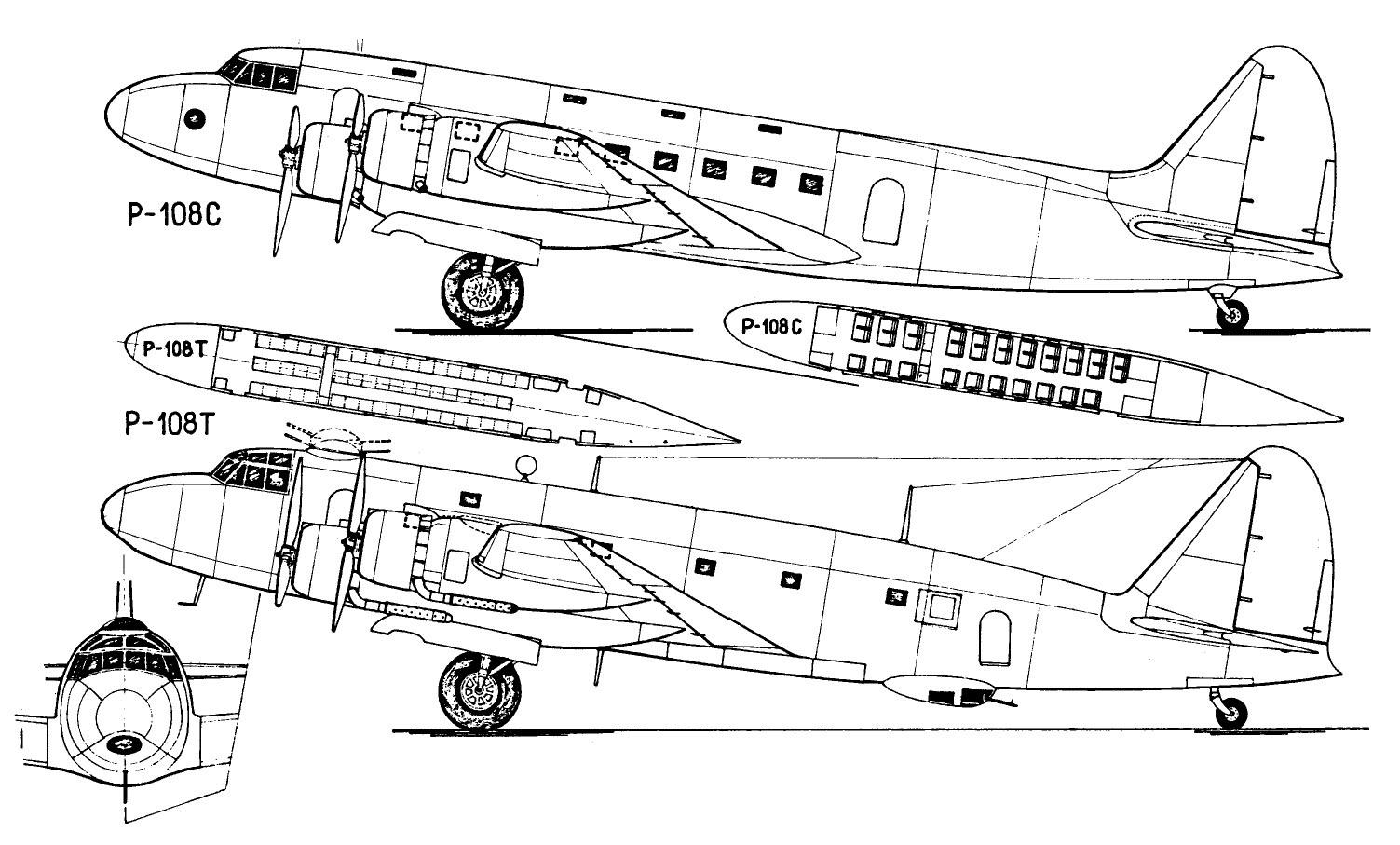| Type |
Heavy bomber, crew 6 - 7 |
P.108T 2 + 60 transport |
| Engine |
4 Piaggio P.XII R.C.35 with 3-bladed constant-speed propellers |
| Dimensions |
Length 22,3 m , height 6,0 m , span 32,0 m, wing area 135 m2 , |
Length 24,55 m , height 5,70 m , span 33,05 m, wing area 142,85 m2 ,
|
| Weights |
Empty 17325 kg, loaded , max. take off weight 29885 kg |
Empty 17200 kg, loaded , max. take off weight 28500 kg |
| Performance |
Max.. speed 475 km/h, cruising speed , range 3295 km, endurance , service ceiling 10500 m , climb |
Max.. speed 440 km/h, cruising speed 378 km/h , range 2500 km, endurance , service ceiling 6600 m , climb |
| Armament |
6 12.7 mm Breda-SAFAT machine guns and 2 7.7 mm Breda-SAFAT machine guns , 3,500 kg of bombs |
4 12.7 mm Breda-SAFAT machine guns |
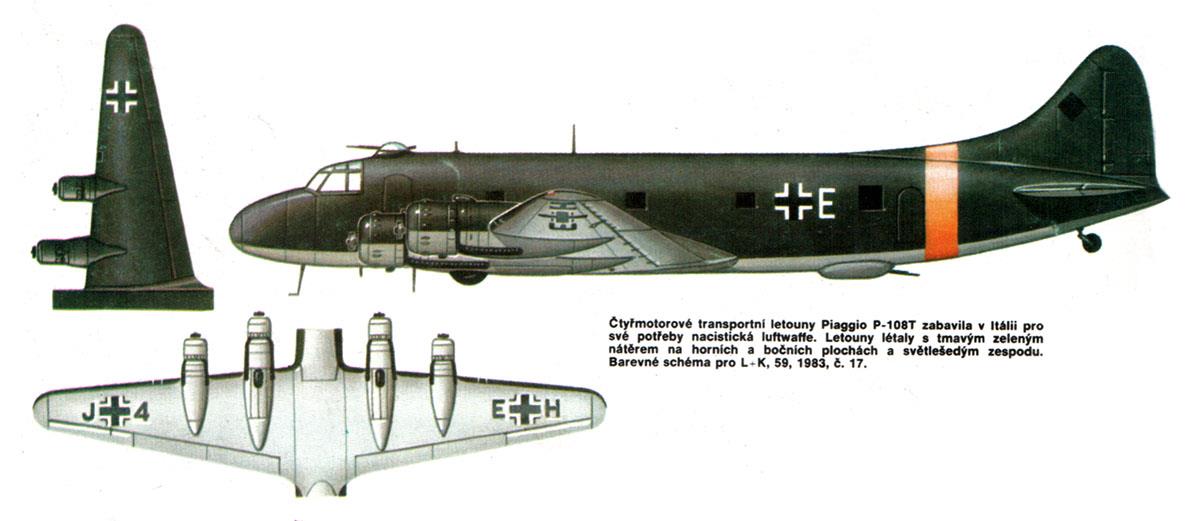

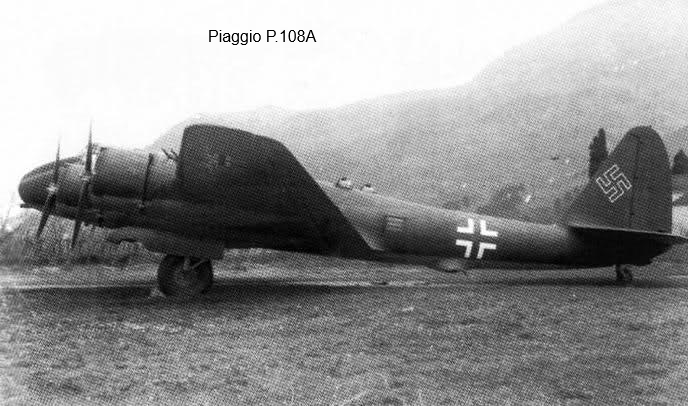
P.108T transport. The latter two versions had a larger diameter fuselage for transporting passengers or freight. They were hardly used by the Regia Aeronautica, the main user being the German Luftwaffe. In 9/43, after the Italian armistice, the Luftwaffe had captured all fifteen P.108 Cs and P.108 Ts built. They were used at the Russian front, as part of Luftflotte 2, where they performed sterling duties, among others during the evacuation of the Crimea in 1944.



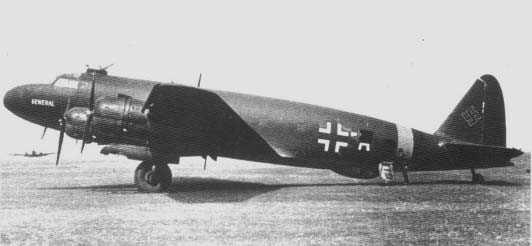

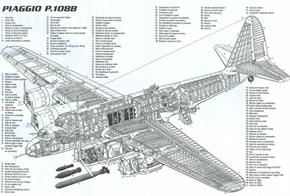
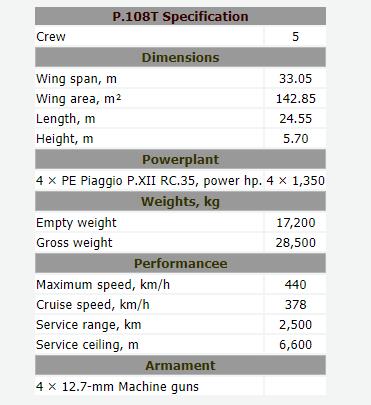
Piaggio P.108C is a medium military transport aircraft. It is a transport version of the P.108B heavy bomber. The latter was created in the design bureau of the company Societa Anonyma Piaggio under the leadership of J. Casiraggi. The bomber made its first flight on November 24, 1939. Serial production of the P.108B began at the Piaggio plant in Finale Marina in September 1940.
In 1942, on the basis of the bomber, a long-range passenger airliner R.108C with a pressurized cabin for 32 seats was designed. Its prototype first flew on July 16, 1942. However, the laid down series of 5 copies. Even at the factory it was converted into military transport aircraft. The P.108C was a four-engine all-metal monoplane with retractable landing gear and a pressurized cabin with 56 seats. Crew - 5 people. The power plant is four Piaggio P.XII RC.35 engines. No weapons were installed, but the Germans installed four 13-mm machine guns, modifications were carried out in workshops in Mühldorf.
On September 7, 1942, the “real” transport R.108T made its first flight. It differed from its predecessor in an unpressurized cabin with 60 seats, a cargo hatch, a reinforced floor, a modified tail and installed weapons (four 12.7 mm machine guns). Since February 1943, the plant began mass-producing aircraft. Production of the P. 108T ended in 1944. A total of 6 P.108C and 5 P.108T were built.
The R. 108 S/T have been in service in Italy since July 1943, in Germany since November 1943. The Italian Air Force only managed to receive the R. 108C, but used them very little. All these planes were captured in September 1943 by the Germans. They also got the P.108T, which were at the factory at that time. The Luftwaffe used them for transportation on the Eastern Front. They played a special role during the evacuation of troops from Crimea in 1944. Each plane carried 100-125 people. In addition to the R.108 S/T, two disarmed R.108Bs also took part in the transportation. The German Air Force operated Italian aircraft until the surrender.
